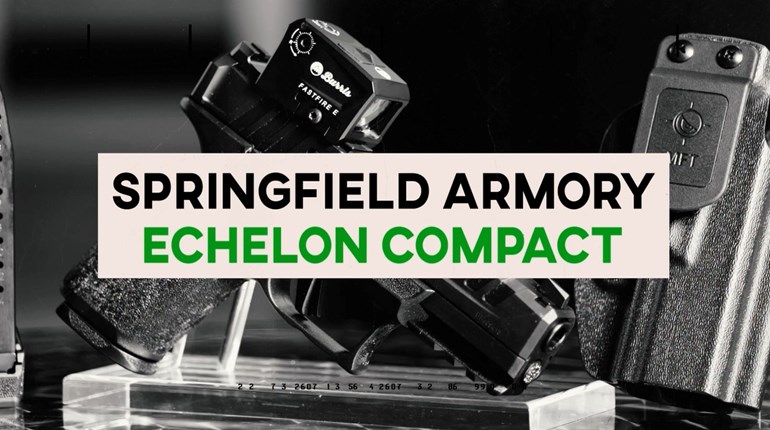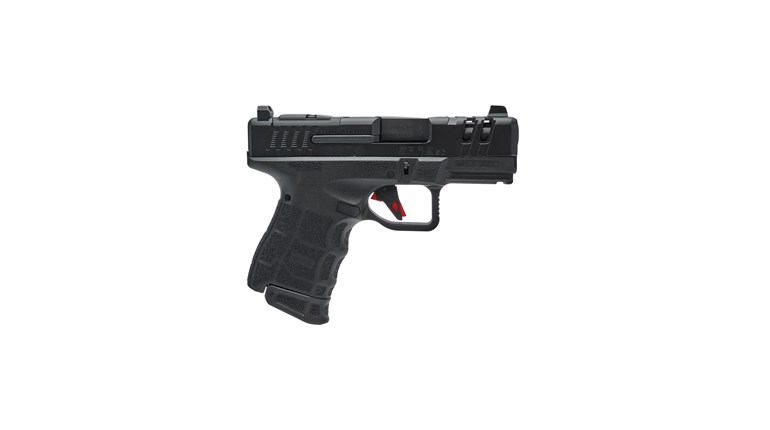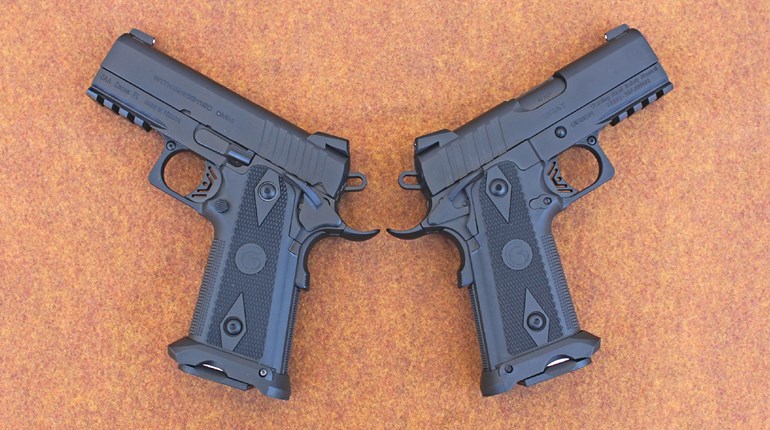
During my shooting career, I’ve found myself getting really into certain guns for a while. I was a hopeless Glock fangirl in the 1990s, going so far as to make a Glock desktop theme for Windows 95. (That’s right, I was such a nerd that my desktop PC would play a .wav of Tommy Lee Jones saying “Get yourself a Glock and lose that nickel-plated sissy pistol” when you shut it off.)
I went through a short fascination with the Heckler & Koch P7 after that, and then a period of infatuation with postwar Smith & Wesson Hand Ejectors, before spending years down the rabbit hole of custom 1911s.
Through all this time, there were a number of guns that I knew objectively were fine firearms but, for whatever reason, just couldn’t grab my interest. This is something I’ve decided to rectify by seeking out and spending some quality time with these various handguns I’d previously shunned, to see what the magic might be that I’d been missing out on.
My quest is starting off with the CZ 75, and all the various spinoffs and variants. To say this is one of the most important handgun designs of the 20th century wouldn’t be an exaggeration, and few things are this prolific without being fundamentally good at what they’re intended to do.
What the CZ 75 was designed to do, originally, was generate foreign hard currency for the state coffers of what was then communist Czechoslovakia. Due to vagaries of Cold War politics, they were uncommon in the U.S. until the fall of the Iron Curtain, but copies of them proliferated.
The design, or variants of it, has been manufactured in Italy, England, Turkey, Switzerland, Israel and several other countries. The copies by Italian manufacturer Tanfoglio have been sold in the U.S. under various iterations, and are best known in the guise of the European American Armory (EAA) Witness series of pistols.
It has spun off compacts and subcompacts, polymer variants and factory raceguns. Versions have been sold in almost every major service chambering, as well as oddities like .41 AE and 9x21 mm.
The original CZ 75 drew approving commentary from Jeff Cooper back in the day because, while it was chambered in the (allegedly) inferior 9 mm and of the DA/SA “crunchenticker” persuasion, it could be carried cocked-and-locked as the Colonel believed fighting pistols should be. As a matter of fact, the design of the short-lived Dornaus & Dixon Bren Ten pistol was loosely based on the CZ 75.
Not only does it still see military and police service all over the globe, it’s also fantastically popular in action-pistol shooting—and yet I really never had much experience with them. I owned a couple “Tanfos” back in the ’90s, a 9 mm and one of the aforementioned .41 AE guns because I’m a sucker for weird calibers. I never shot them much, though; the 9 mm because it was a limited-edition gun that boasted an entirely case-colored finish that I bought because it was pretty and the .41 AE because ammunition in that chambering was already rarer than honest politicians by 1995.
Other than encountering them in passing at work, I never spent any serious time with a CZ variant until that 9 mm Pavona I reviewed for this magazine a few years ago. It left an impression on me because, though the sparkly frame was a little gimmicky, the basic pistol was sound: accurate, trouble-free and easy to shoot.
The “easy to shoot” part stuck with me. One day not too long ago while I was putting nose prints on the glass at my local gun store, my eye was caught by an unusual-looking CZ. It was a CZ 75 B Omega, set up as a decocker-only gun, with suppressor-height night sights, a threaded barrel, and an overall “Urban Grey” Cerakote finish accented with black controls.
Having just put in serious trigger time with two different DA/SA hammer-fired guns, the Springfield Armory XD-E I reviewed for this magazine and an H&K P30L for a different project, I figured I’d give the CZ 75 design another look, and bought the Urban Grey 75 B Omega.
As of this writing, I have a little over a case of ammunition through the gun (1,159 rounds, if you want to be specific) with not a single malfunction of any type. It even gobbled up the remainder of a case of nasty TulAmmo 115-grain FMJ that was lightly loaded enough to be problematic in the much-more expensive Heckler & Koch I’d just finished testing.
The CZ is plenty accurate and stupid easy to shoot fast, between the fact that it’s over 2.5 pounds with a full magazine and the single-action trigger is light and manageable.
I replaced the black plastic factory grips, which somehow manage to be a little slippery and yet sharp and abrasive at the same time, with some VZ “grenade-textured” grips and that improved the gun’s handling dramatically, and makes it look even better. While looking around at grips, it struck me how much of an aftermarket there is for these guns nowadays. Back when I had those Tanfoglios in the ’90s, you more or less had to be happy with how they came out of the box. Now they have an aftermarket that, while not 1911-size, is still substantial.
I’ll come out and admit it, I have probably been neglecting CZ unfairly all these years. The experience with this one has me looking with new—and covetous—eyes at P07s and Shadow IIs. I wonder what I’ll discover if I go looking at some other guns I’d passed over in the past.






































